
Envahisseurs (Tenues 01), 2022-2023, Villa Kujoyama Kyoto
Envahisseurs (Tenues 01) is a research project on clothing for hip-hop dance.
It is an award-winning project at Villa Kujoyama in Kyoto.
During his many trips to Japan, Teddy was struck by the clothes worn by bricklayers, with their wide cuts, pastel colors and technical materials...
Very much a part of the ever-changing Japanese street, he immediately wanted to inject them into the world of dance. It all started with his diploma project with equipment that also incorporated Japanese fabrics such as chirimen.

Left : Japanese worker in Tokyo. ©Teddy Sanches. 2019. Right : Les Voyant.es. ©Mario Simon-Lafleur. 2019.
With hip-hop culture having reappropriated workwear (Dickies, Carhartt...) from the outset, the link seemed natural. With its different codes but identical heritage, Japanese workwear is a universe he wants to explore in search of what HIP-HOP dancewear would be like.
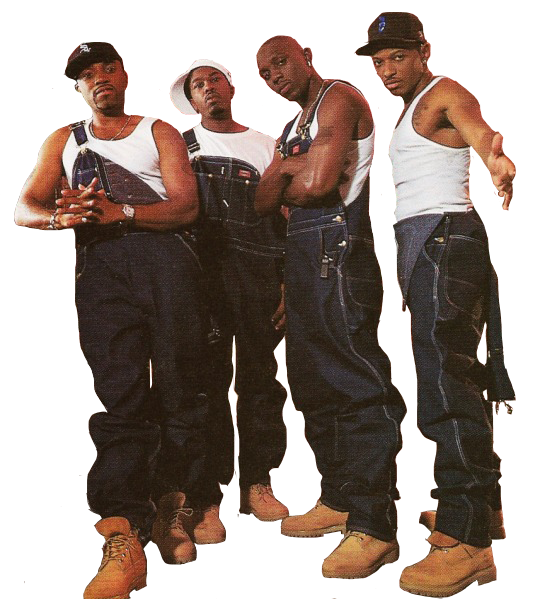
To create high-quality, long-lasting garments, he wants to use traditional Japanese textile know-how, which overturns the industrial patterns and materials usually used for this type of clothing.
VILLA KUJOYAMA PT.1
For the first part of his residency at Villa Kujoyama, Teddy carried out initial research into forms, creating pieces that mixed construction site garments he bought in specialist stores with traditional textiles given to him by craftsmen during his discovery visits. That's why he called these garments “Collages”.
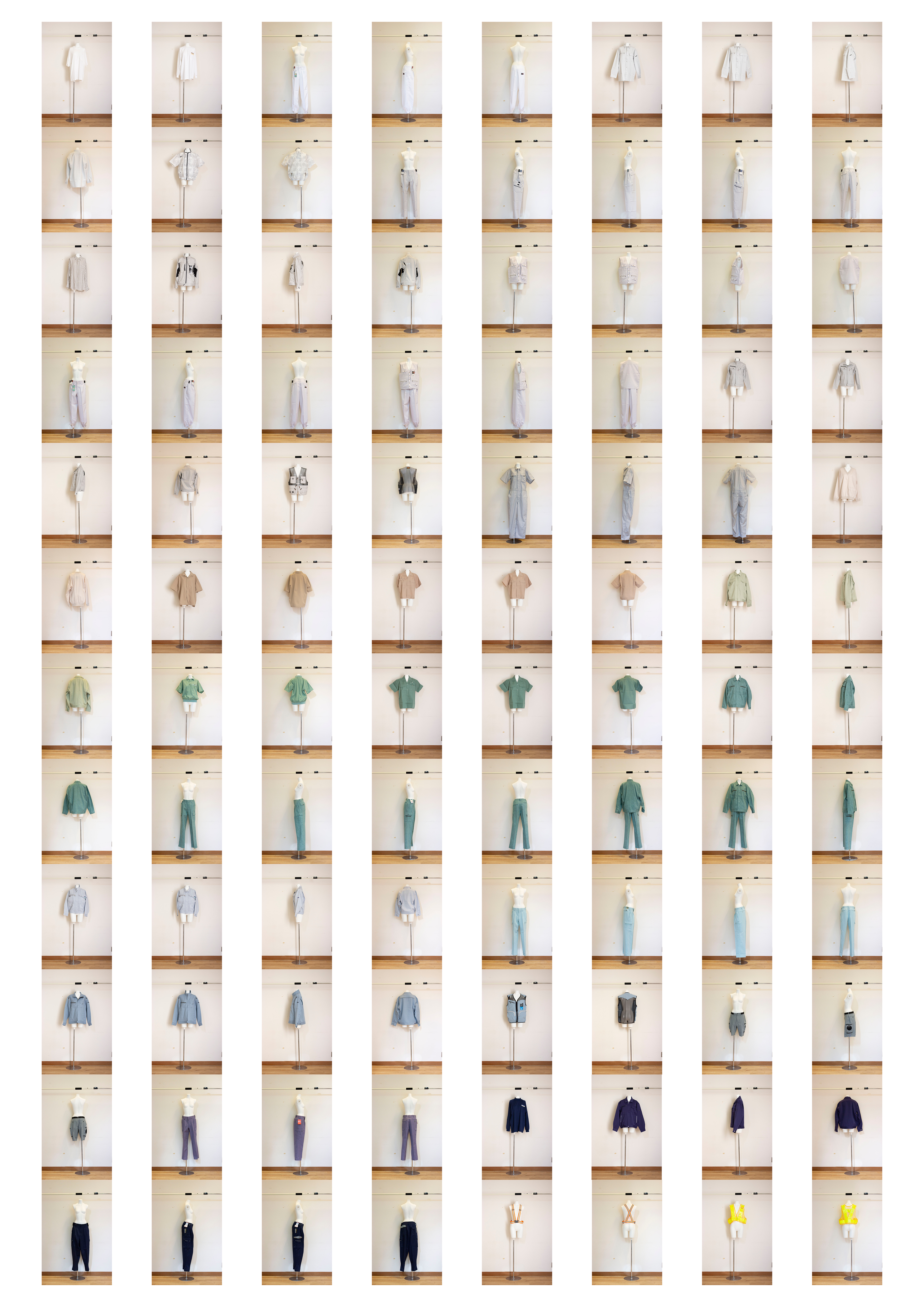

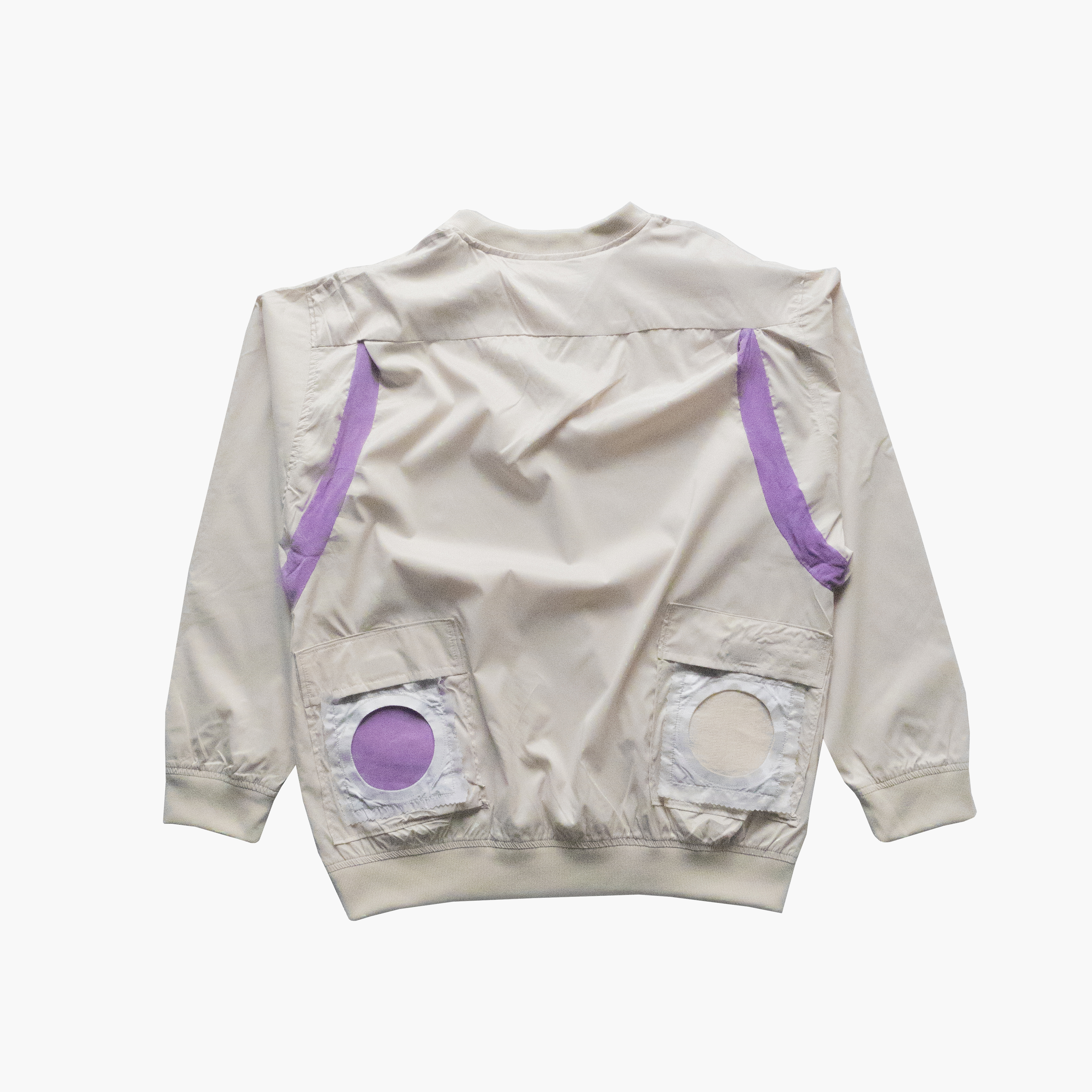
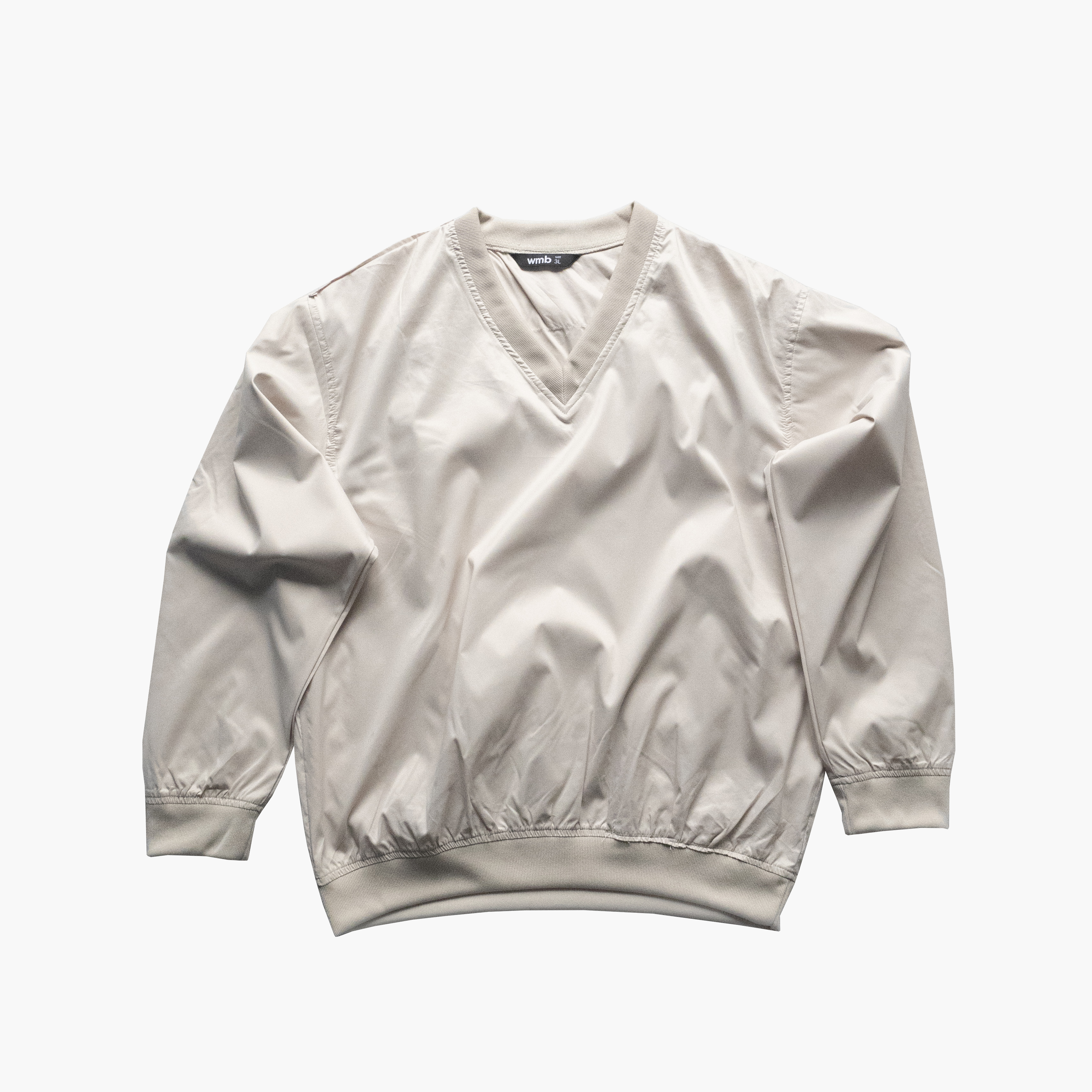
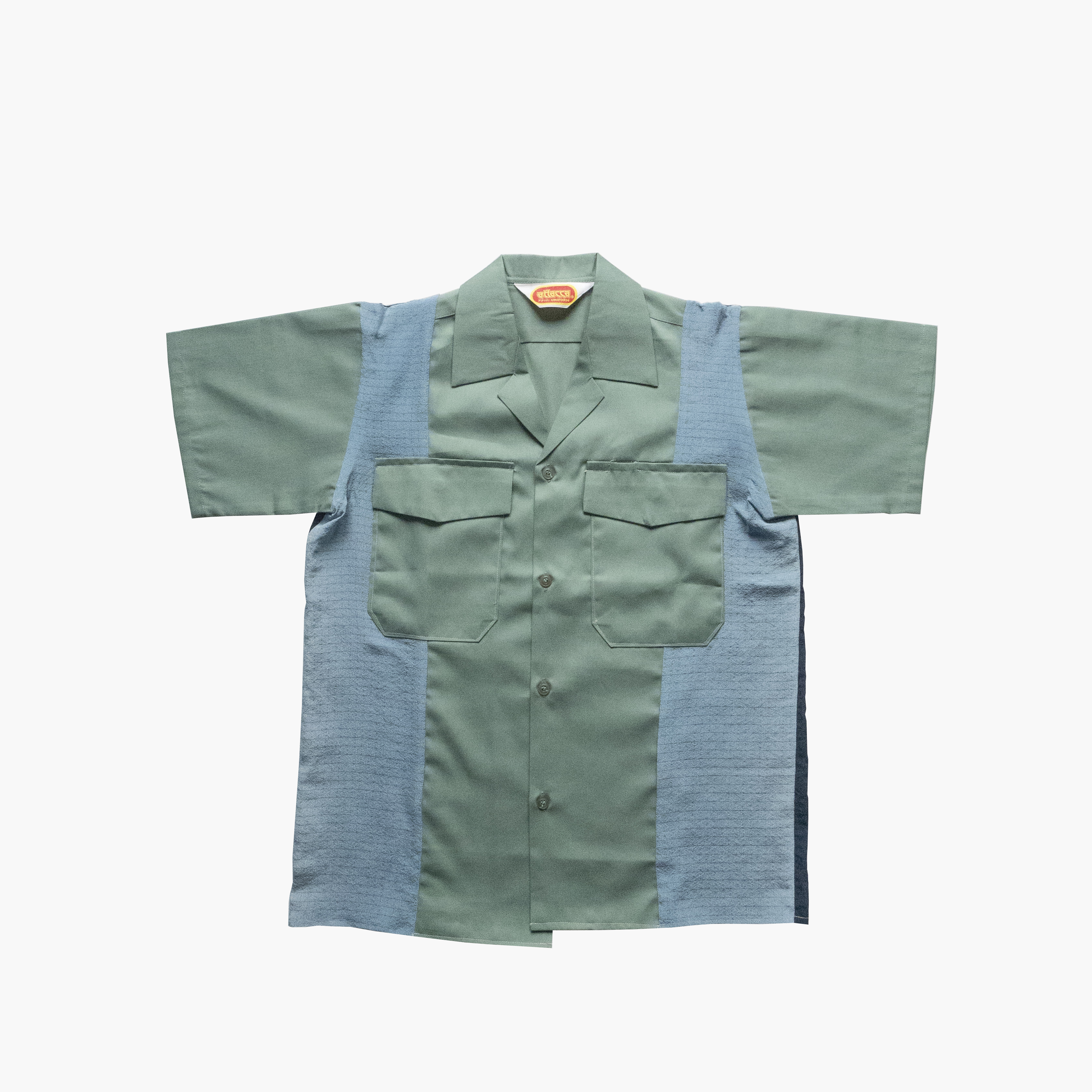



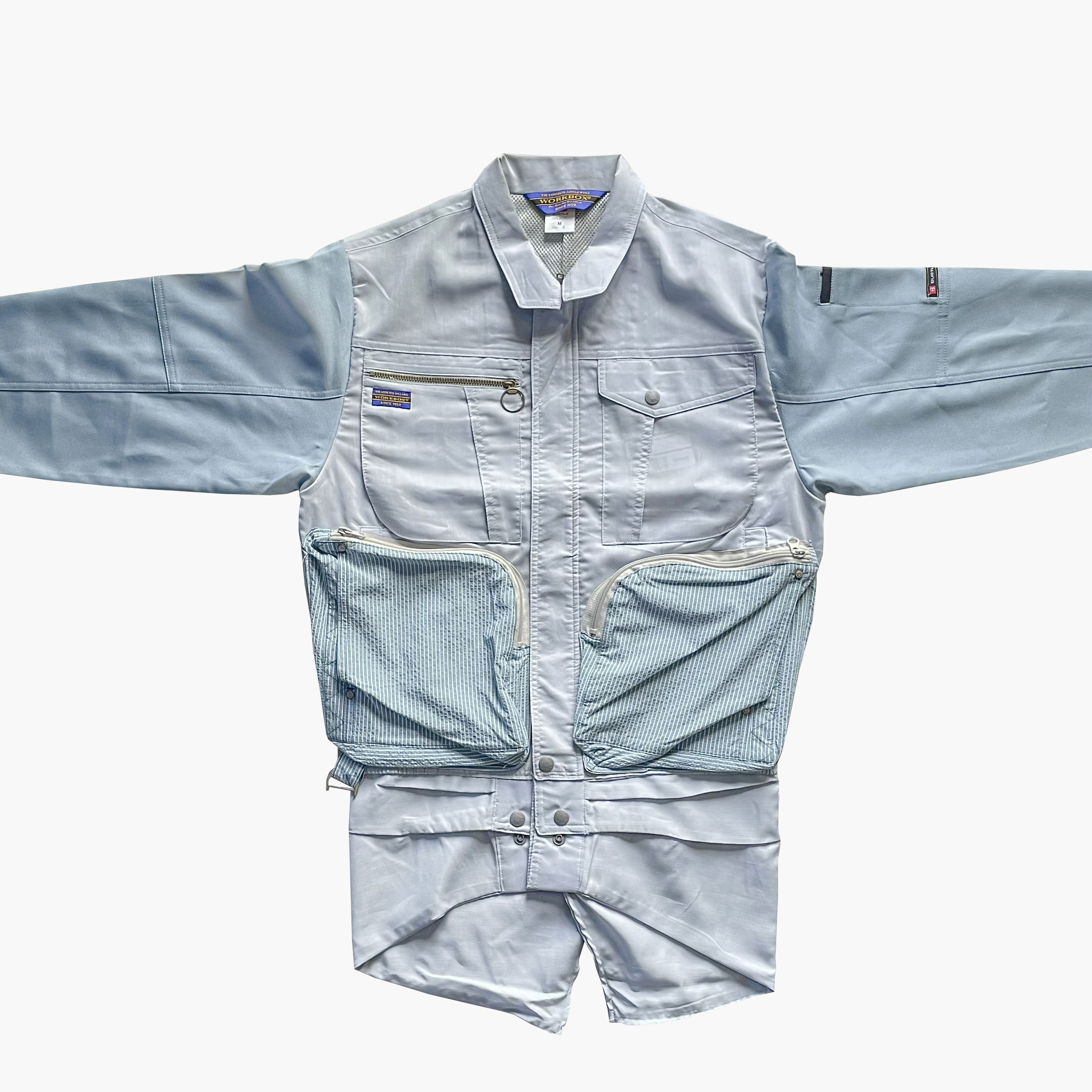
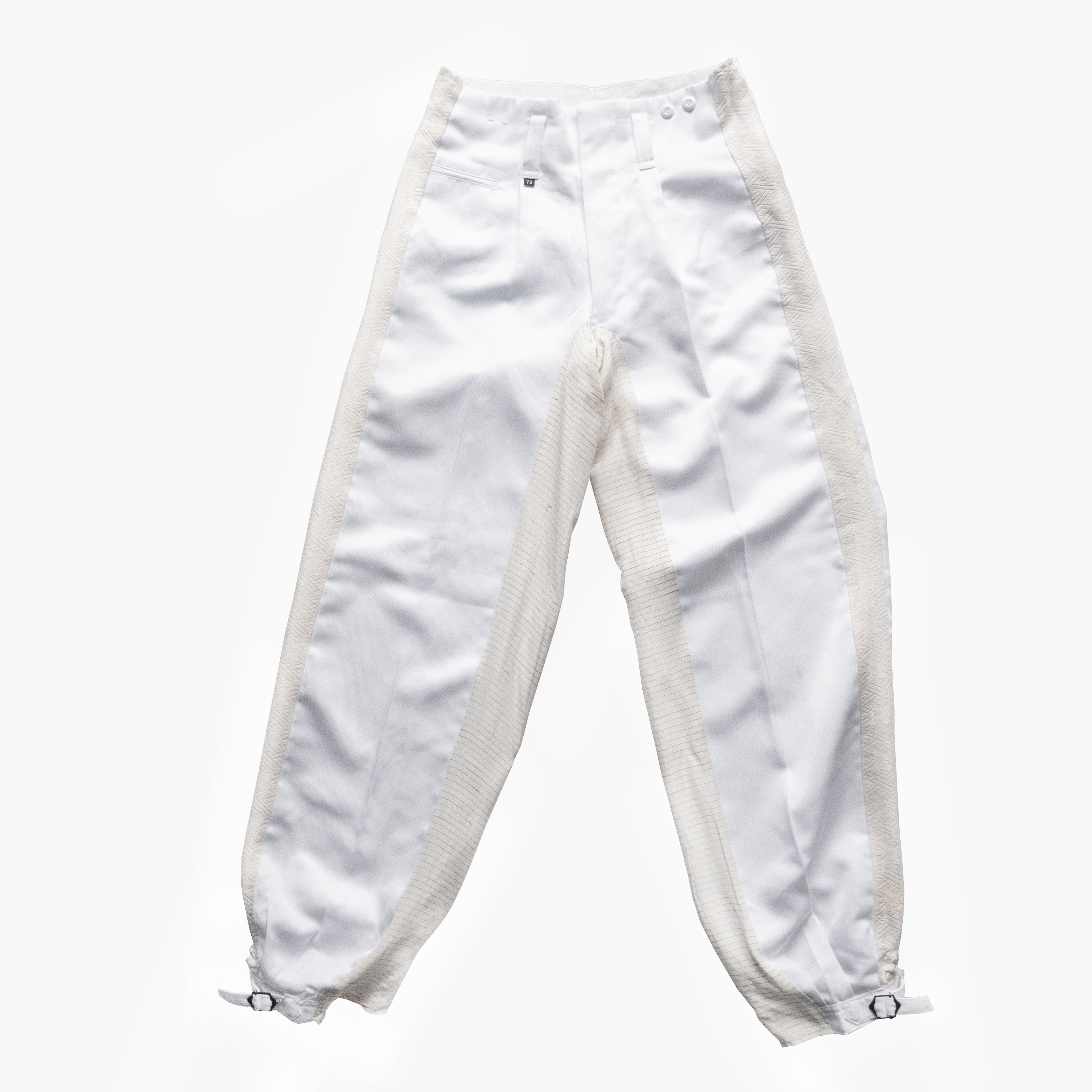

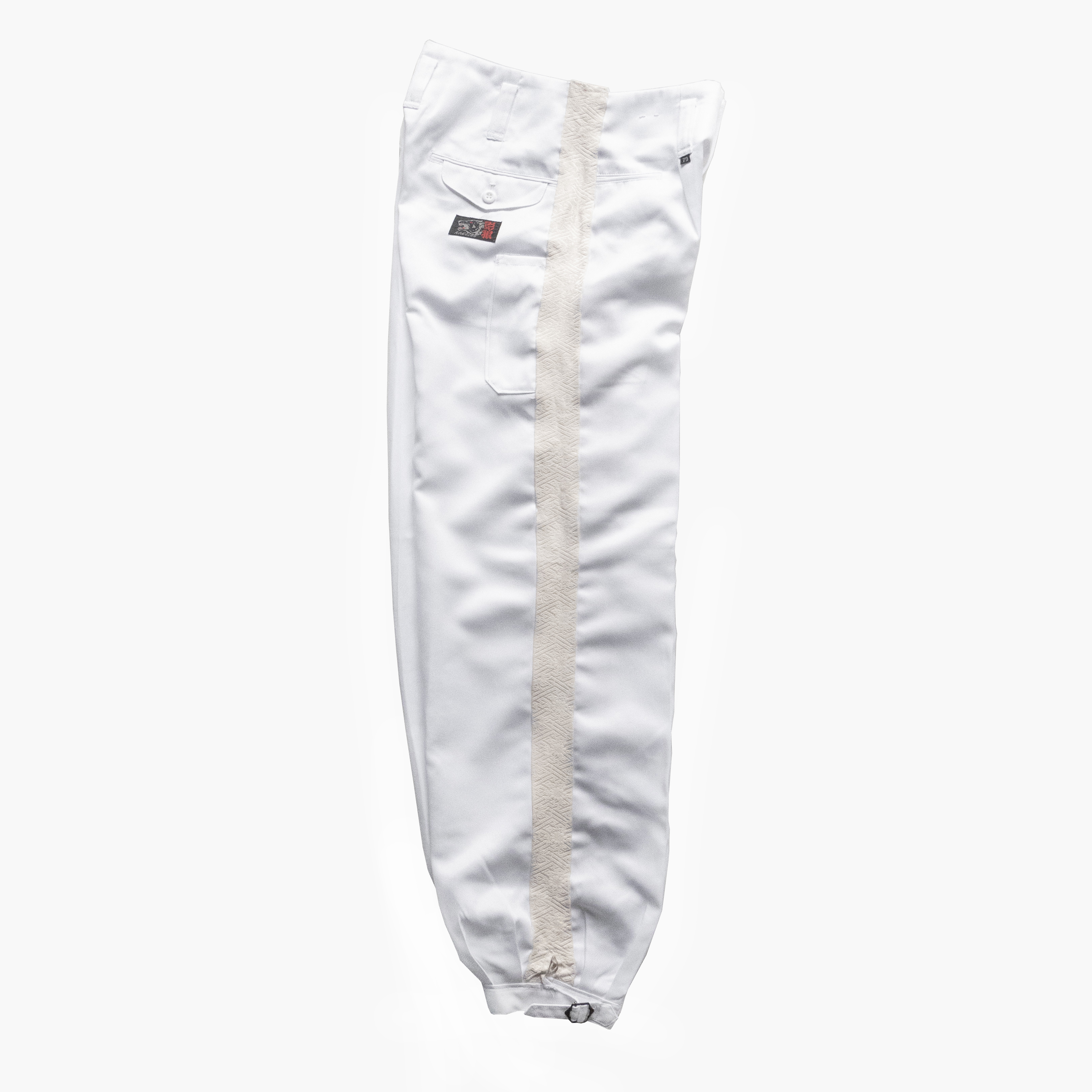

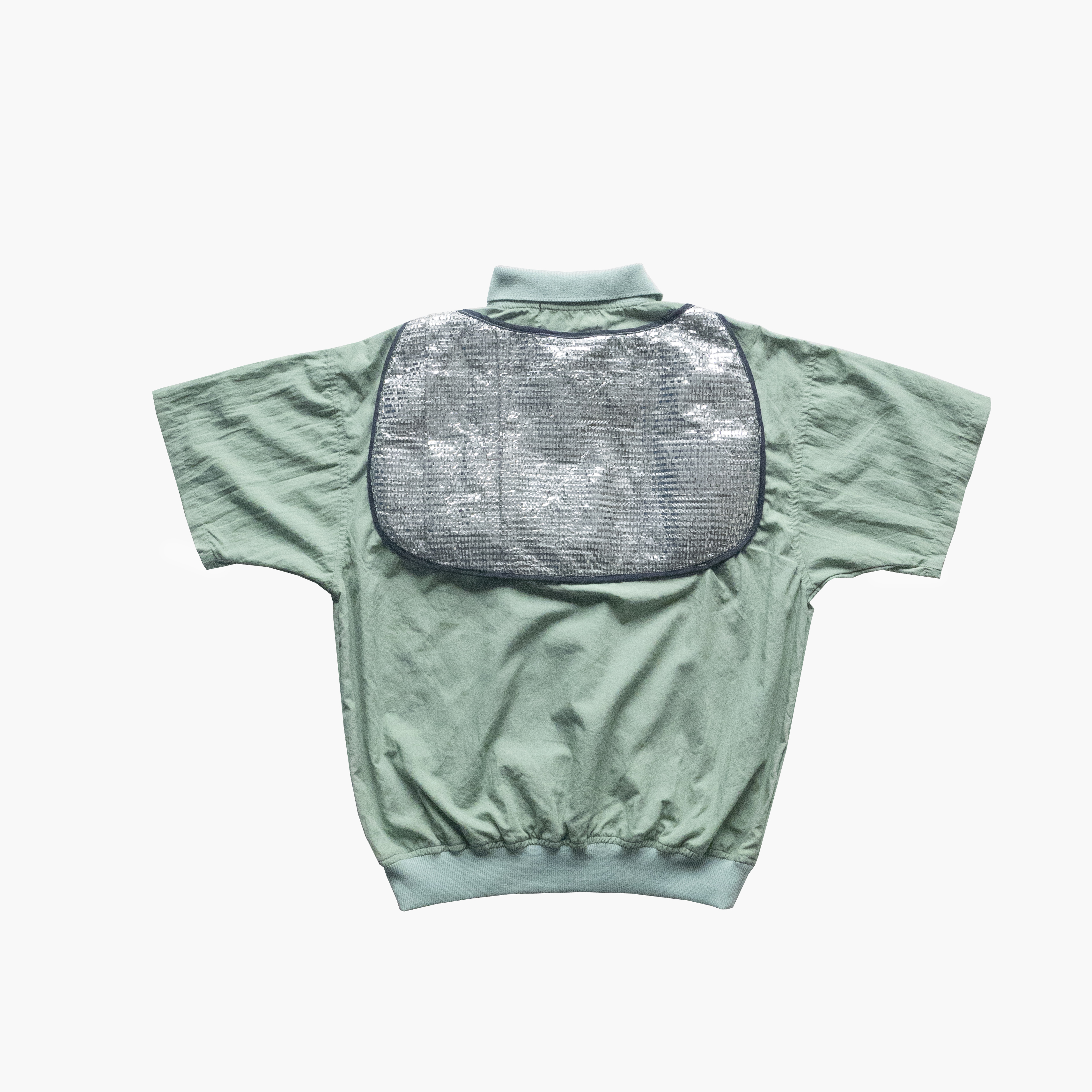

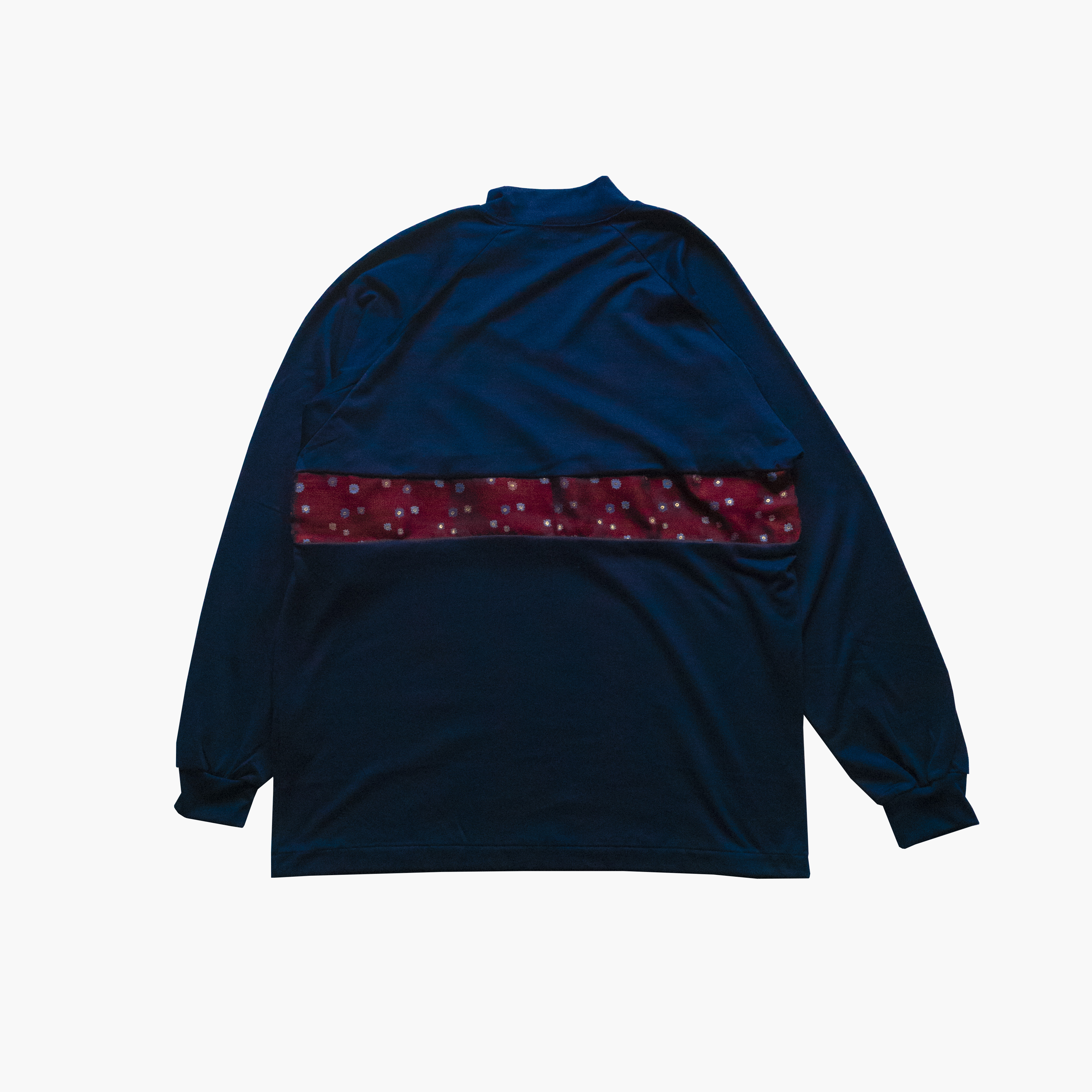


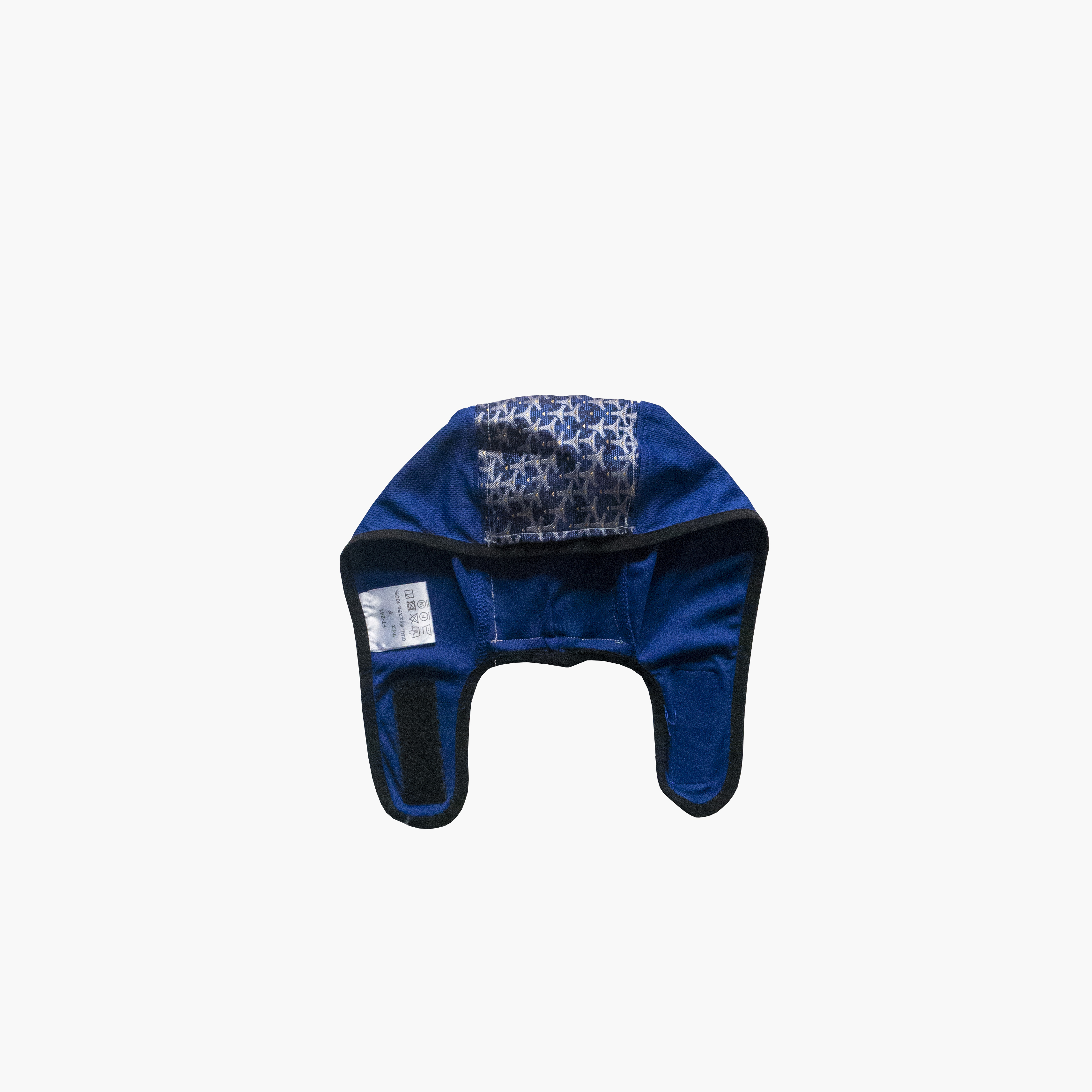

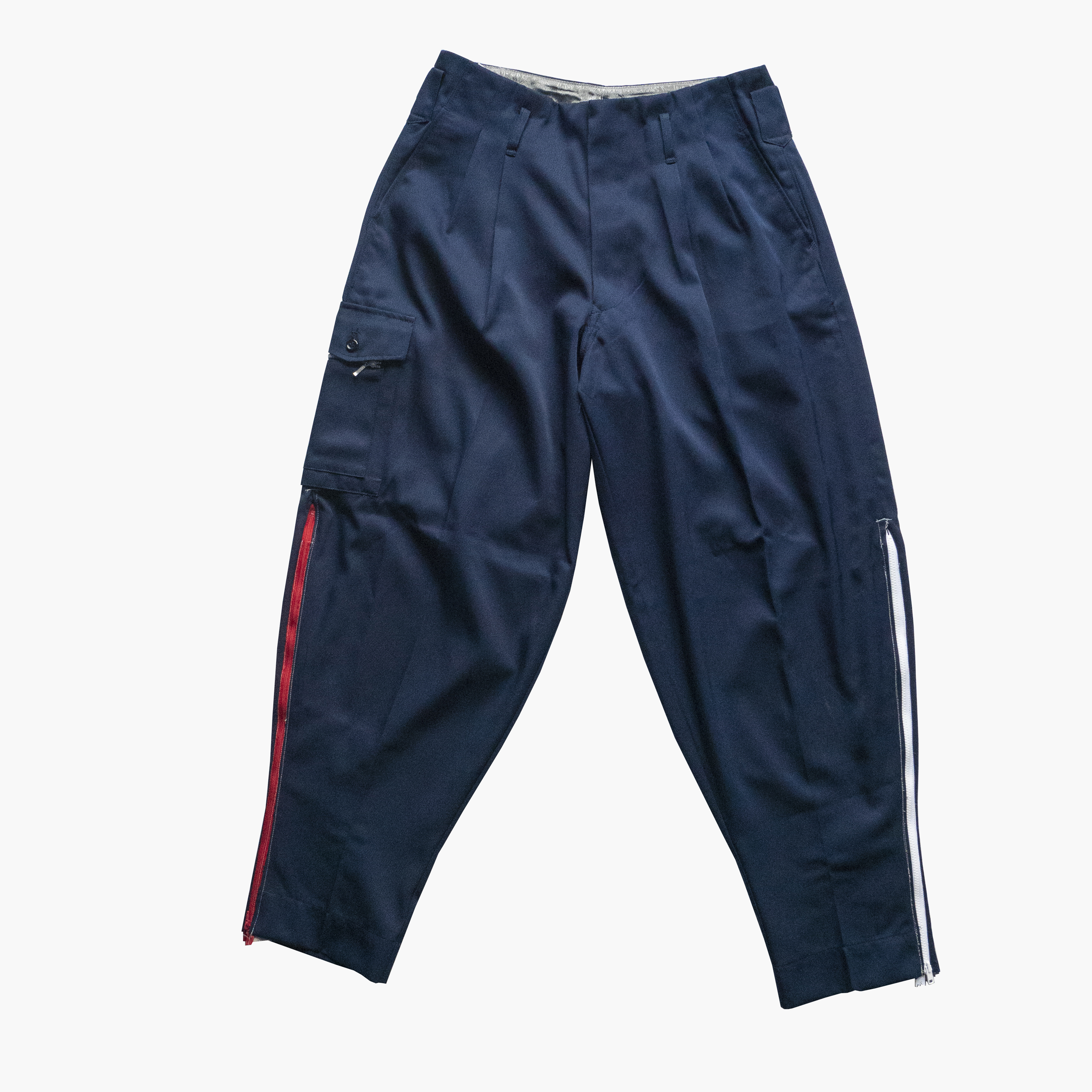

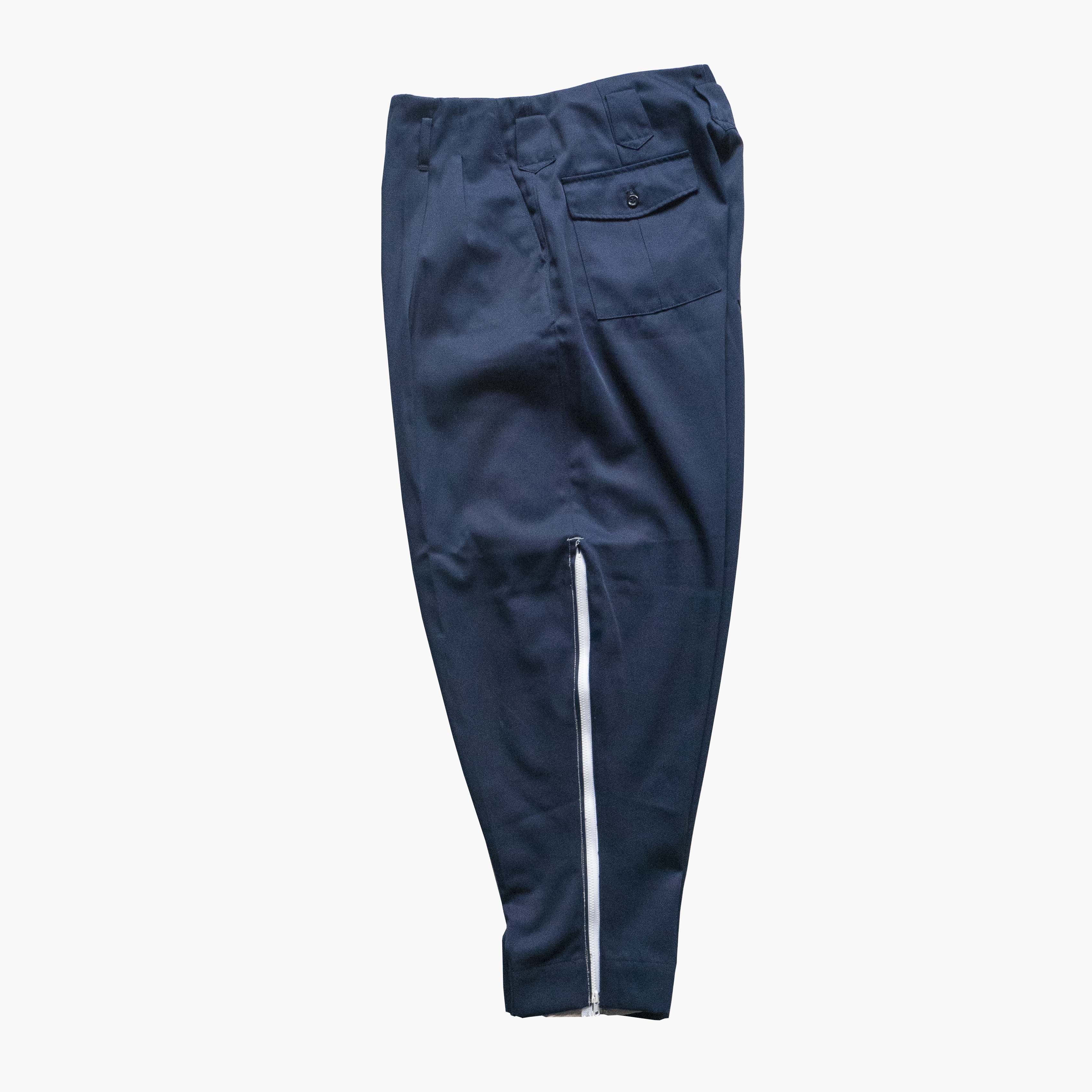

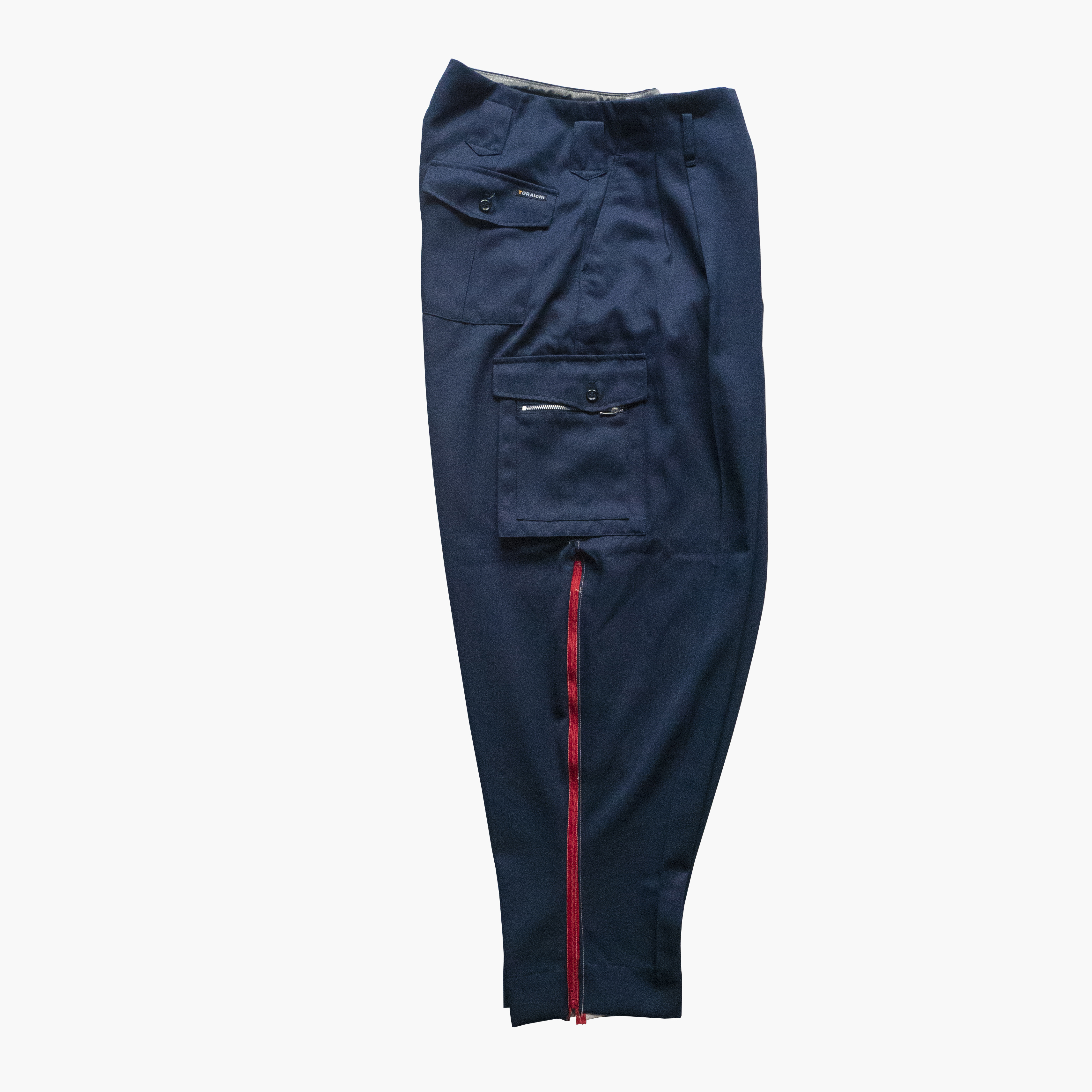



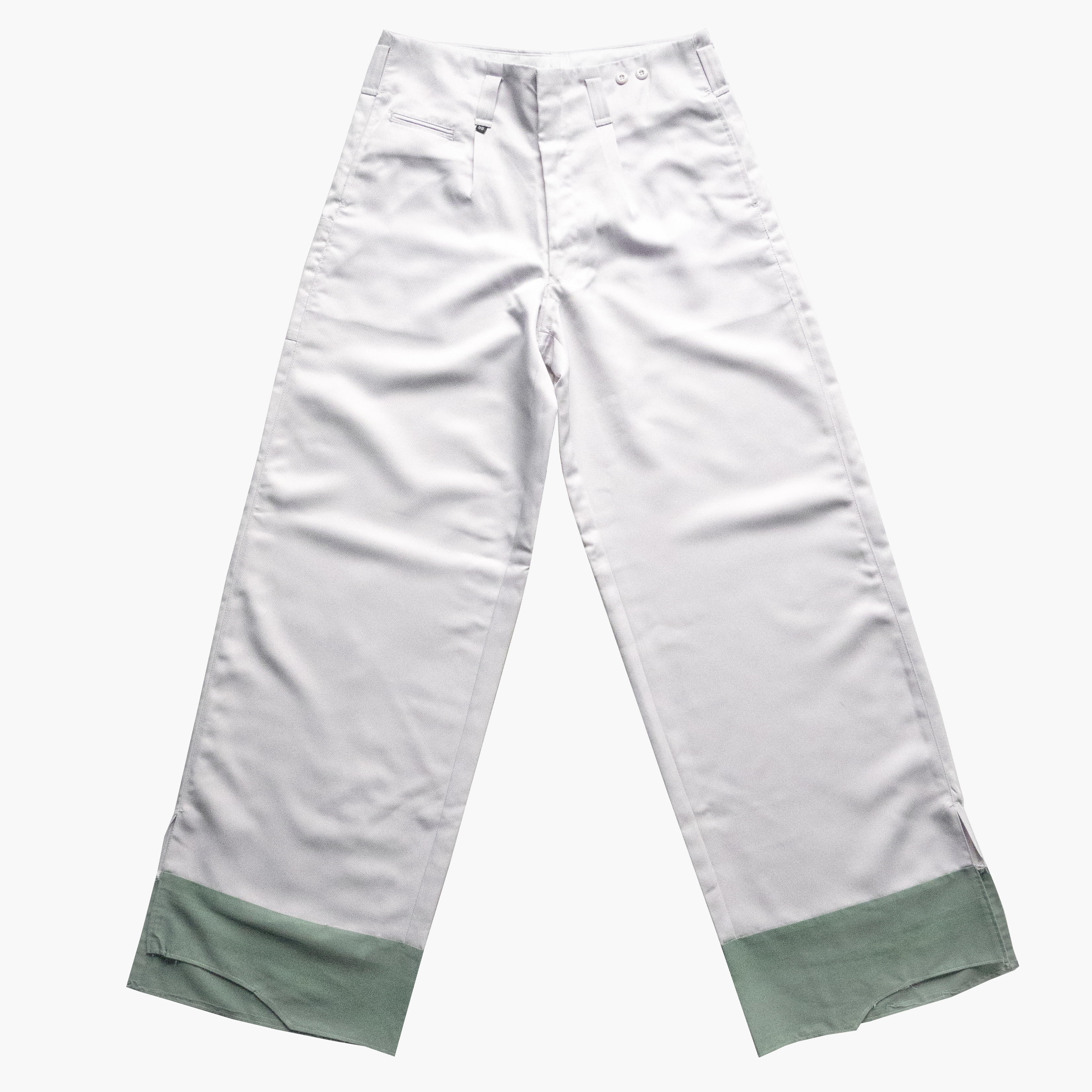

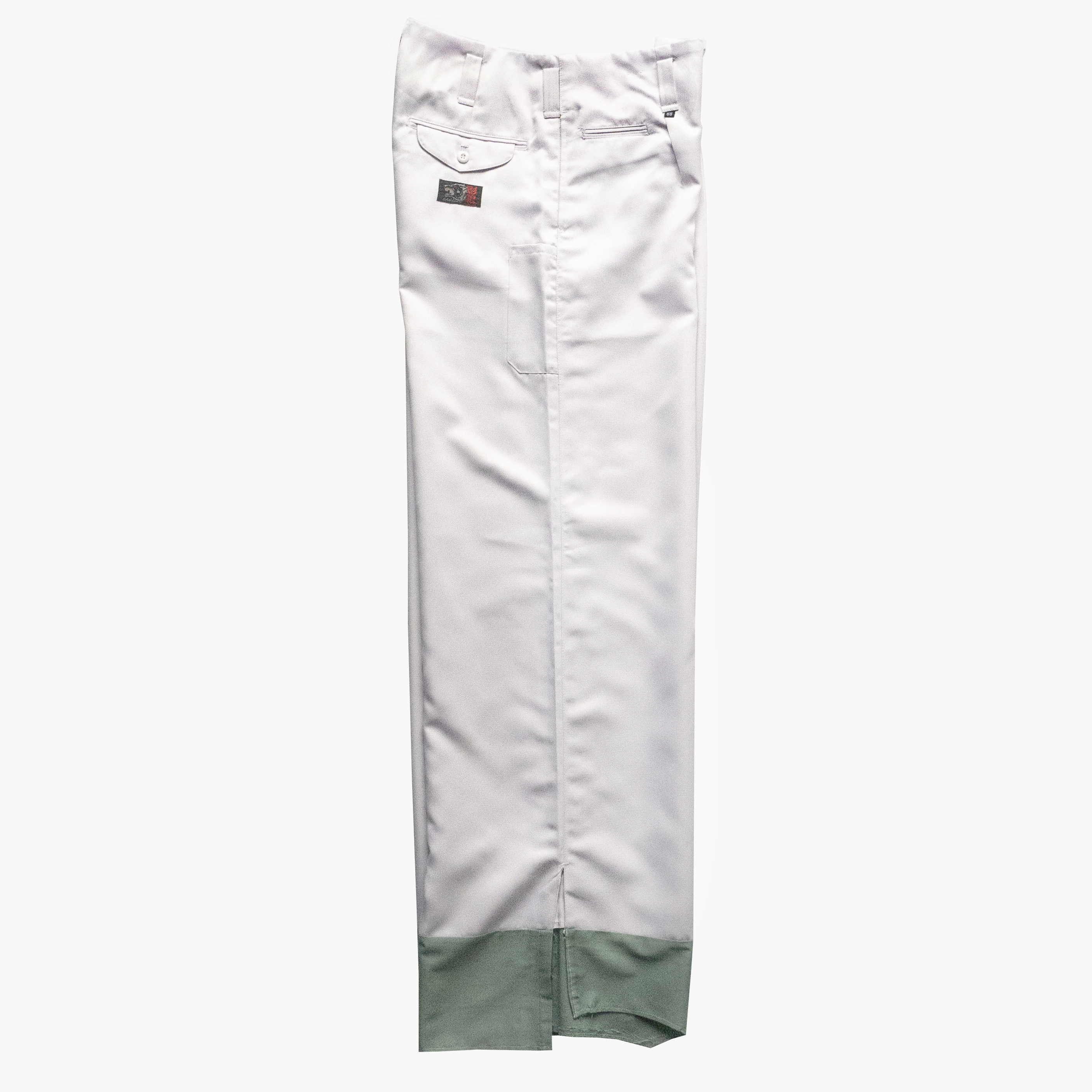
BETWEEN PT.1 & PT.2
Between the two residencies periods (approximately 1 year), Teddy took a step back from the project and the meaning he wished to give it. In this space-time, the "Collages" came to life in the form of performances inspired by the Japanese "Radio Taiso" warm-up movements often used by bricklayers before starting work.
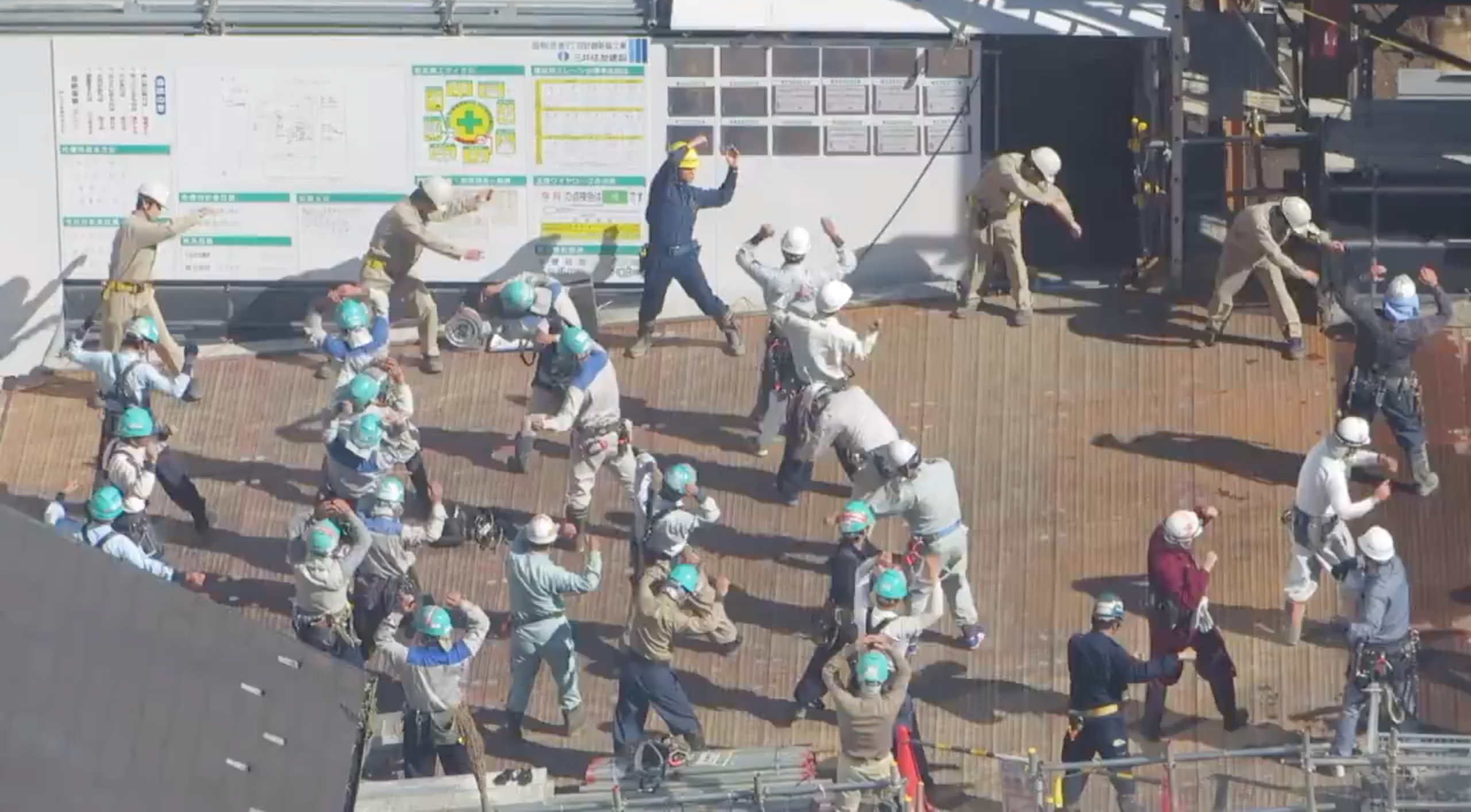
In conversation with Deicy Sanches, who believes that hip-hop is a dance that must combine strength and sensuality, he began to think about the material that could represent this aspect. On a winter trip to Japan, he came across a pair of lightweight denim pants (woven from cotton to make jeans). Noticing that they held up well and were fluid at the same time, he decided that this was the material that would materialize Deicy's vision, and that this was what he needed to continue his research at Villa Kujoyama in 2023.
VILLA KUJOYAMA PT.2
For the second part of his residency, Teddy focused on denim. He travelled to Kojima in Okayama, a place renowned for Japanese denim, to visit denim factories such as Blue Jeans. During a meeting with the jeans brand Big John, he learned that denim is a material with a surprising history: Nîmes twill. Denim (a contraction of "de Nîmes") was invented in Nîmes, France, hence the name. It then took on an international dimension with the United States, which began using it in the 1850s to create jeans, notably under the world-famous Levi's brand.
Many of these jeans, after being used, are imported into Japan. Already worn out (vintage) and appreciated by the Japanese, Japanese companies wanted to reproduce a denim that was soft to the touch and faded in appearance, but new. So they researched bleaching and stone washing to reproduce this effect.
The Japanese began producing their own denim in the 1970s, and it became very famous for its techniques, weaving quality and dyeing. Today, brands such as Momotaro emphasize handmade denim dyed with natural indigo.

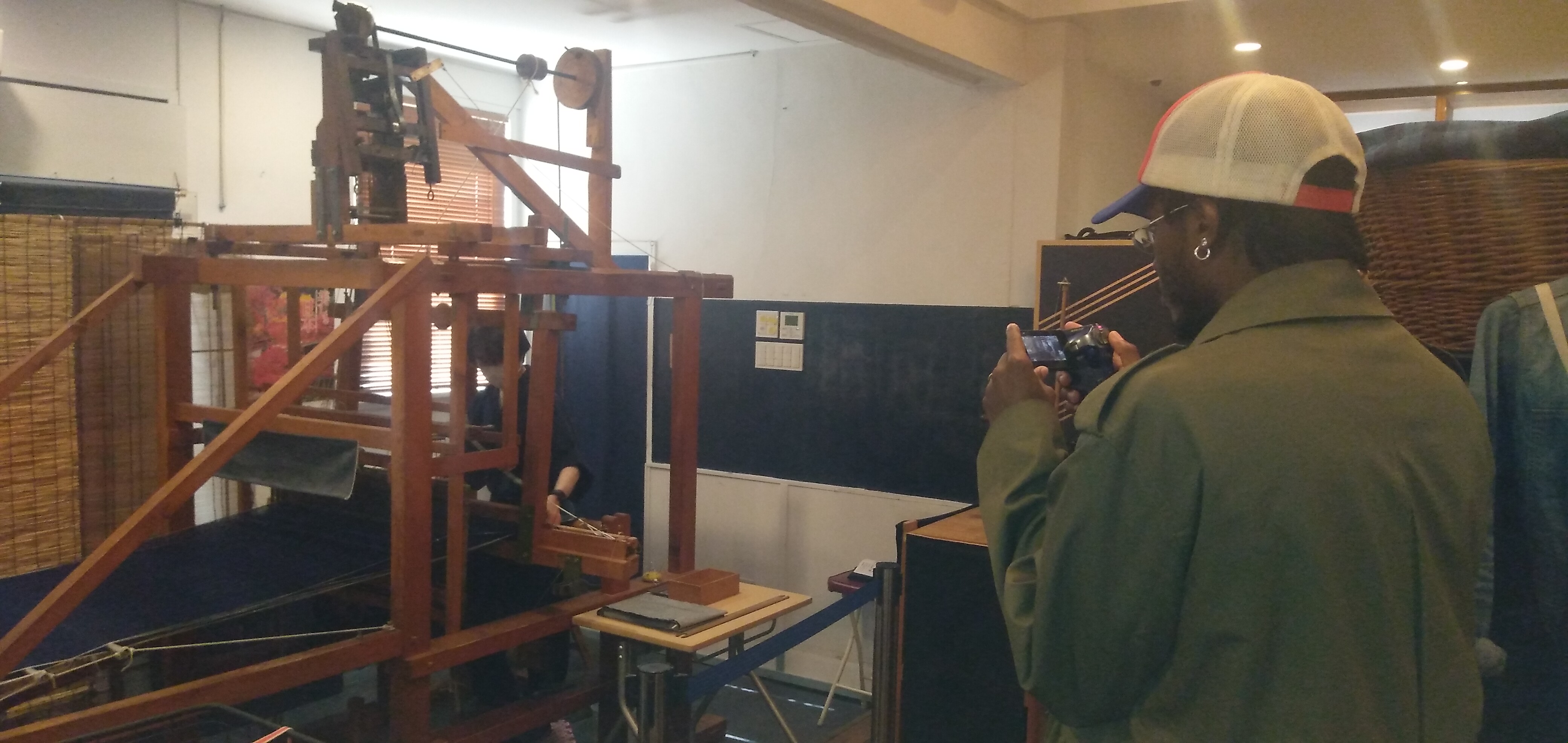

Based on denim, Teddy worked on indigo and yomogi (Japanese plant) dyeing techniques, stencil dyeing (katazome) and nishijin weaving in collaboration with the craftspeople he met during the first part of his residency: Shun Hatano, Riku Matsuzaki, Ema Okamoto and Taketoshi Akasaka.
1. YOMOGI
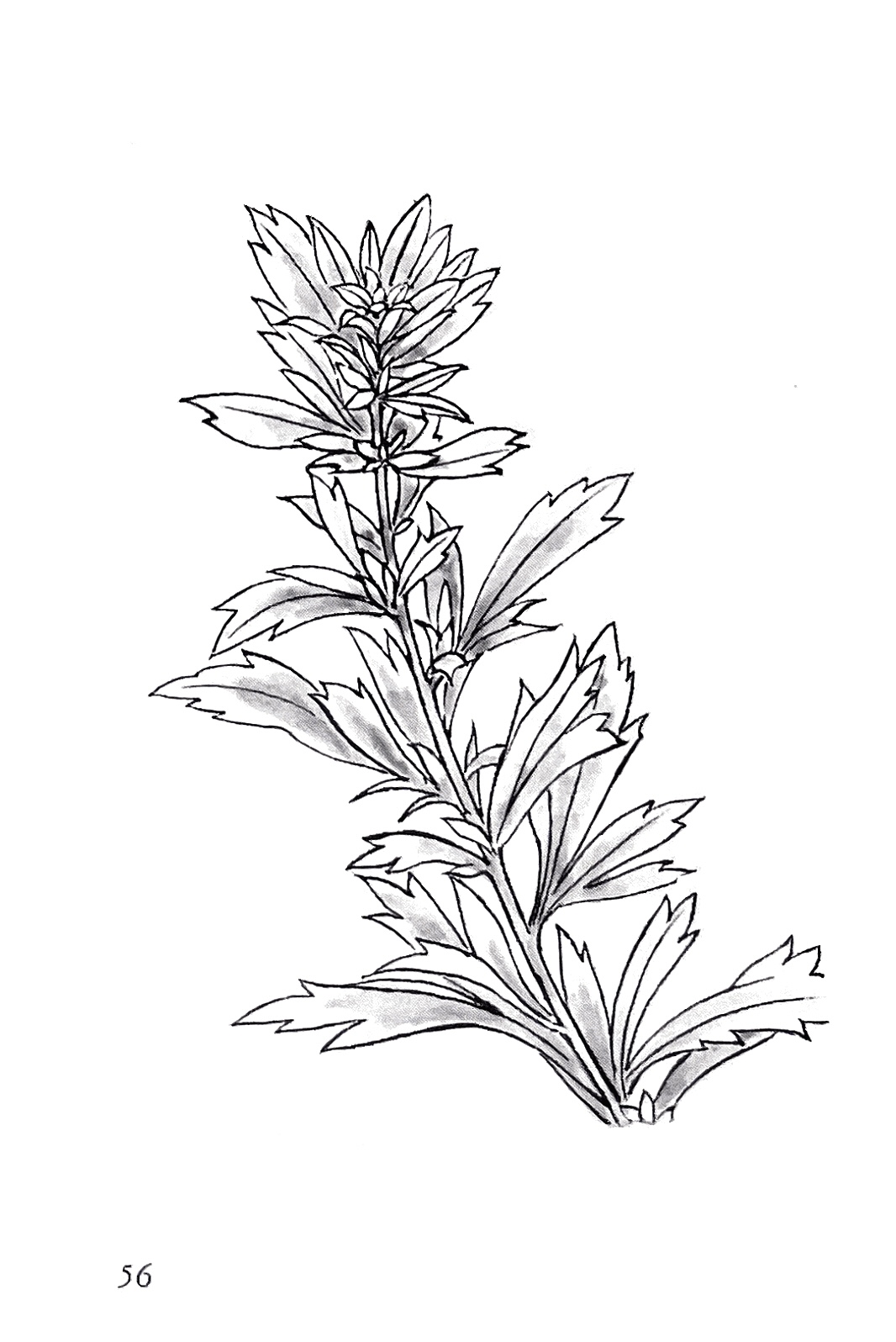 Drawing of a Yomogi plant.
Drawing of a Yomogi plant.With Shun we experimented Yomogi dyeing and we still on process to obtain a satisfying result and denim fabric.
2. AIZOME

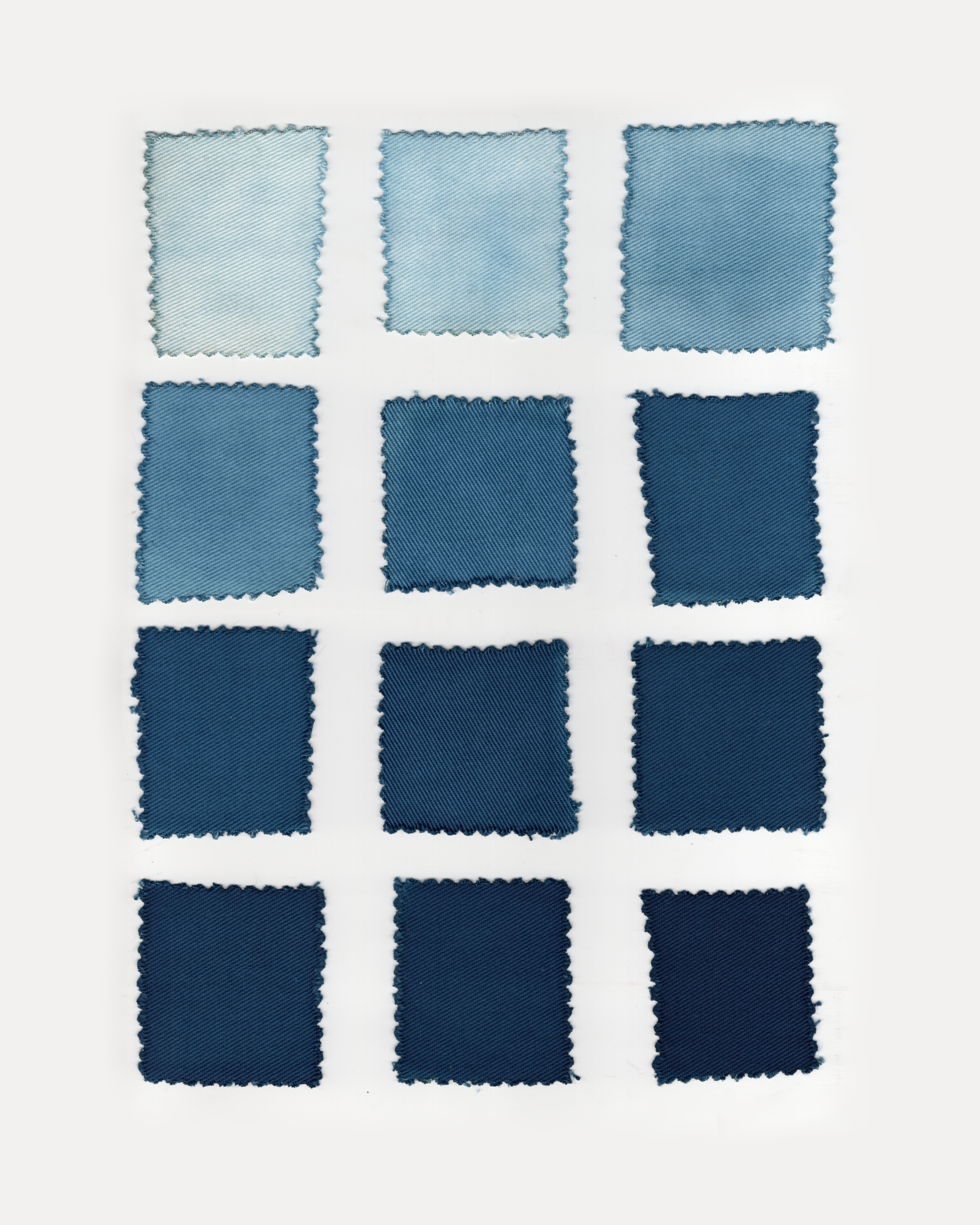
Denim & twill indigo dyed samples made by Matsuzaki-san. © Teddy Sanches.
Indigo is a dyeing technique, by fermenting a plant called "Ai" in japanese, we obtain "sukumo" that is used for that technique. A fabric is tempered in water that contain sukumo and when it is pulled out, in contact of air, the fabric become blue. The longer the soaking time, the darker the blue.
He uses a 100% natural process and the challenge was to create a dark color, difficult to create with natural dye.
3. NISHIJIN-ORI
 Color combinaison test samples made by Okamoto Nishijin. ©Teddy Sanches.
Color combinaison test samples made by Okamoto Nishijin. ©Teddy Sanches.
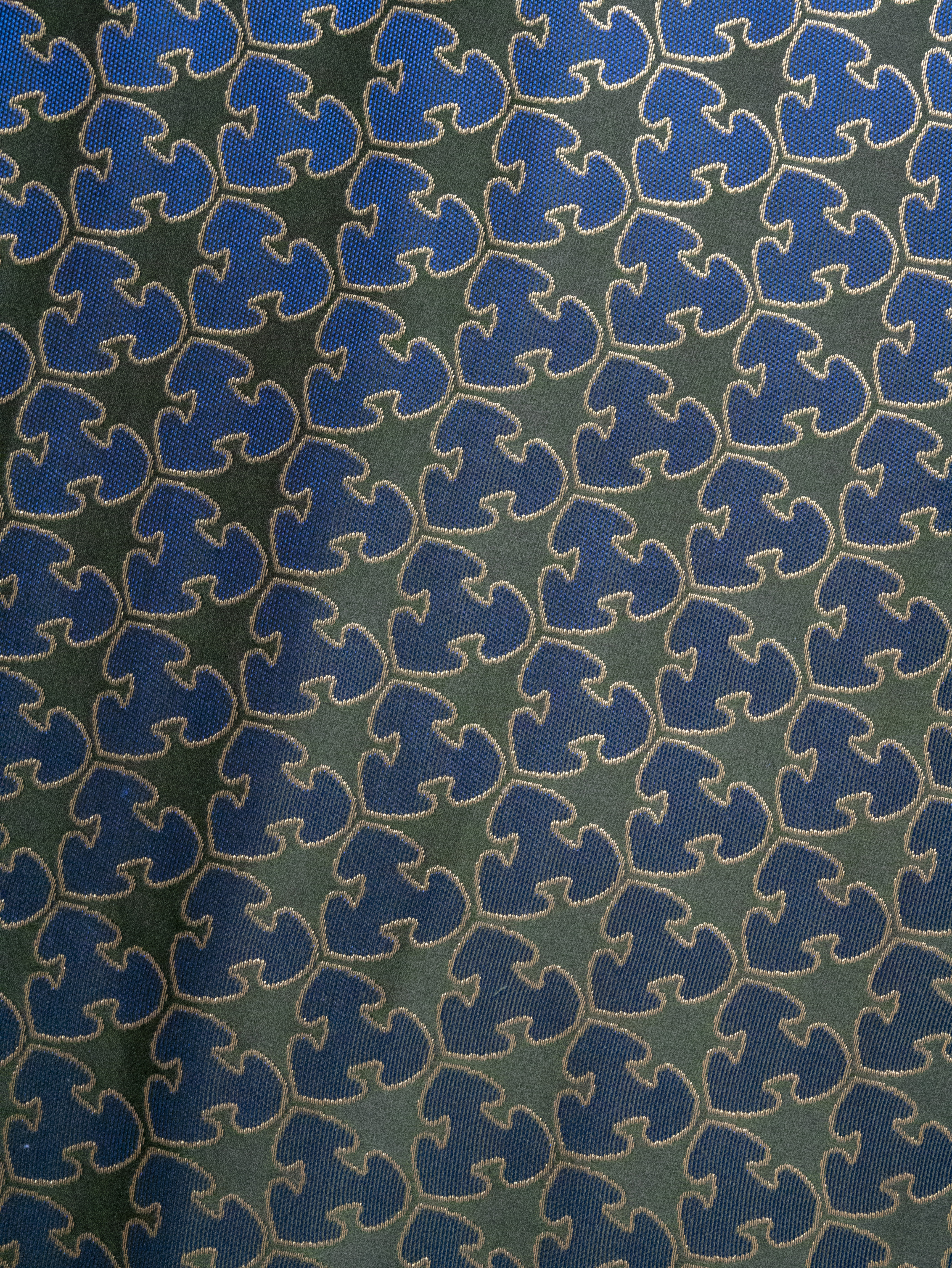
This fabric is made by Okamoto Nishijin, a japanese fabric maker based in Kyoto Nishijin district.
Nishijin-ori is the traditional japanese fabric how-know for Kimono.
The how-know of Okamoto is that they weave silk and golden threads that are called Kinran. Those threads are made by washi (japanese paper) coated with extra-thin gold. We experimented different colors combinations before choosing the one which works.
This fabric was designed and made for details of the clothes like pockets.
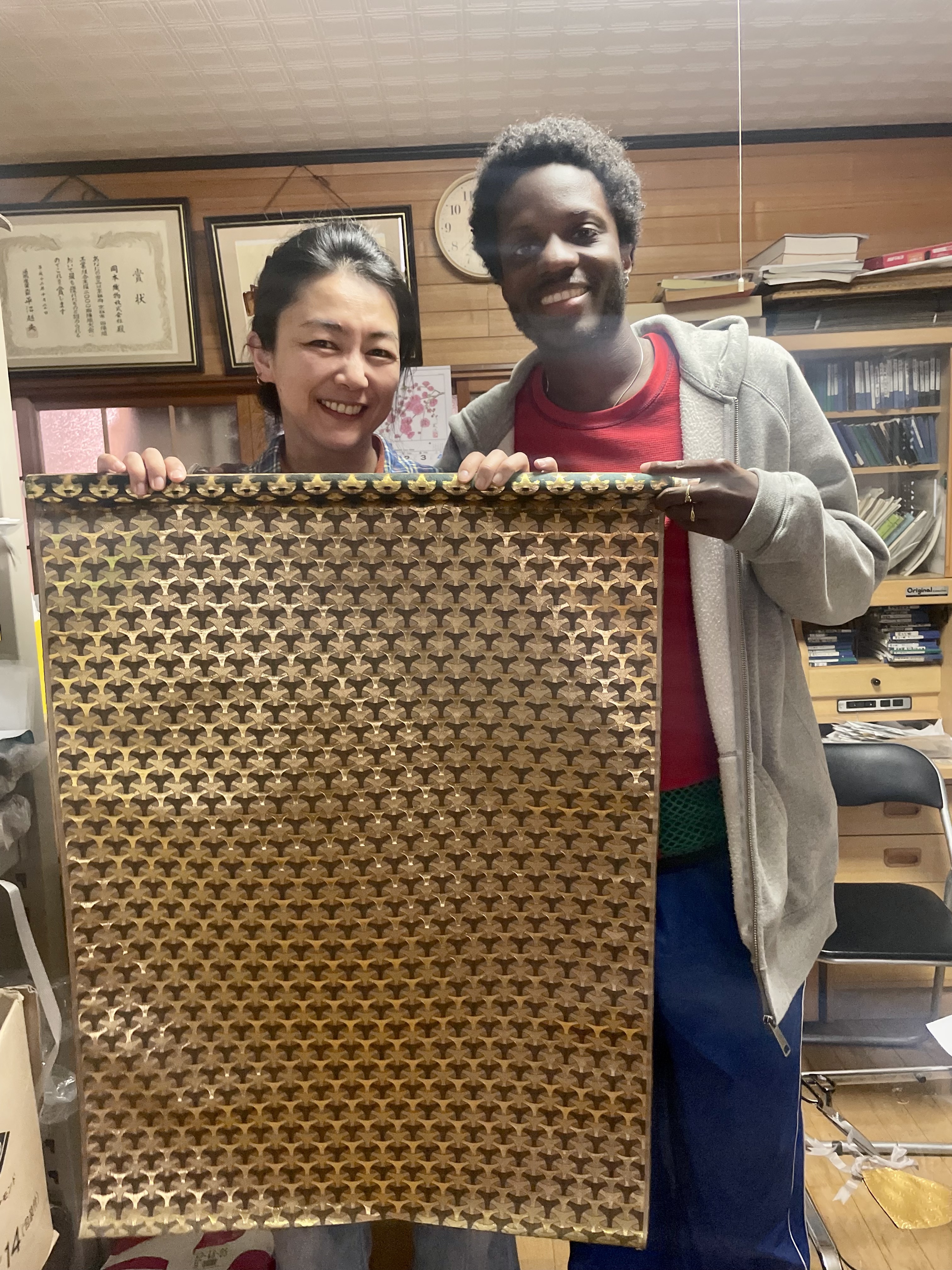

We designed a pattern inspired by Kyoto transportation system logo that Teddy crushed on last year and a pattern that Ema-san from Okamoto Nishijin showed us and that is from Edo era (pictures above).
4. KATAZOME
 Dyeing test sample made by Taketoshi Akasaka. ©Teddy Sanches.
Dyeing test sample made by Taketoshi Akasaka. ©Teddy Sanches.


This fabric is made by Taketoshi Akasaka, a japanese Katazome artist based in Kyoto.
Katazome is a stencil dyeing technique to create fabric with patterns by dyeing.
First the pattern is cutted in a special washi (japanese paper), with that paper the glue is applied on the fabric to make reserves, we dye, we steam off the glue and we wash the fabric.
 Adire stencil (left) and Katazome stencil (right) ©Teddy Sanches.
Adire stencil (left) and Katazome stencil (right) ©Teddy Sanches.Japanese Katazome artisan aim is to make a pattern with zero imperfections.
With Akasaka-san we work on a process inspired by similar nigerian technique "Adire", that have a "diffuse" aspect. Akasaka-san imitate that aspect by dripping the ink.
It's this approach that interests Teddy in relation to the links he wishes to make between Africa and Asia. This desire to make links was also born in the time between residencies.
This search for hip-hop dance clothes is about comfort for dancing, about what clothing can represent, and about the links that this dance has succeeded in creating between different continents: hip-hop dance has its roots in Africa, and Teddy also wants to reweave links (which are already there) through textiles.